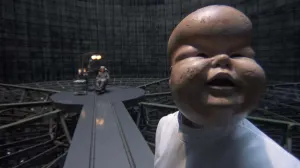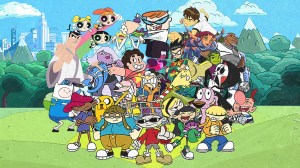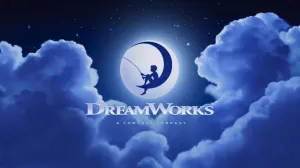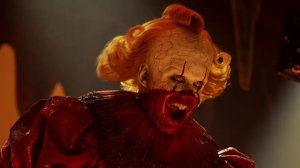The Arrowverse is always growing. Beginning with Arrow, the world of DC that appears on The CW quickly expanded to include first The Flash, and then DC’s Legends of Tomorrow and Supergirl. It wasn’t long before we got Black Lightning (which was kinda/sorta in the same space) and Batwoman, and in the near future we have Superman and Lois and possibly even Green Arrow and the Canaries, plus the upcoming Stargirl, which will debut on DC Universe and The CW in May. But following the events of “Crisis on Infinite Earths,” the five-part mega-crossover that ran through the shows in December and January, fans now know that even more worlds are part of it.
Videos by ComicBook.com
The multiverse may be closed off to the heroes of Earth-Prime, but that doesn’t mean it doesn’t exist anymore, and as seen in the final moments of “Crisis,” it seems like it has been more or less fully restored. Ignoring the worlds that are now part of Earth-Prime, what’s still out there?
Well, lucky for you, we have a rundown of everything that showed up in the TV miniseries as well as the comic book tie-ins. So here is, as far as we can recall, all the stuff that made an appearance in “Crisis on Infinite Earths” and is now part of the Arrowverse.
Superman (1941)

Earth-F, a world where Superman’s shield has a black background and his adventures take place in the 1940s, was one of a number of realities that showed up in the Crisis on Infinite Earths 100-Page Giant two-part comic book tie-in. For fans who don’t immediately get the reference, it’s the world of the Golden Age animated shorts from legendary animator Max Fleischer. If you have never seen them, they’re worth checking out — and while Superman himself may not be in the public domain, these shorts are easily found on bulk $5 DVDs and on YouTube, fully legally.
Batman (1966)

Earth-66 is the home to a nameless character (almost certainly Dick Grayson) played by veteran Batman TV and animation actor Burt Ward. Ward, who played Robin on the wildly popular Batman TV series in the ’60s, was tapped to appear in “Crisis on Infinite Earths” pretty early in the process and announced during the Batwoman panel at Comic Con.
Wonder Woman (1975)

In that same comic book tie-in, an antimatter wave tore through Earth-75’s Washington, D.C., with Wonder Woman trying to rescue a group of people. The costume, setting, and details all felt distinctly like the Wonder Woman TV series, giving Lynda Carter her second Arrowverse role (kind of), after her role as the former President on Supergirl.
Crisis on Infinite Earths (1985)

In the second issue of the comic book tie-in, there’s a splash page where The Ray, Nyssa al Ghul, and Felicity Smoak — trying to find their way to Oa to get their hands on the Book of Oa — stumble into Earth-85, where they saw a version of the Crisis from the comics, with superheroes who aren’t Arrowverse heroes battling a version of the Anti-Monitor.
That’s right — the comic book tie-in for the TV adaptation of Crisis on Infinite Earths, actually time warped into the middle of Crisis on Infinite Earths.
Earth-D

From original Crisis on Infinite Earths writer Marv Wolfman, the Justice Alliance — a team of heroes from a world where the classic Justice League lineup is younger and more diverse — appeared in a tie-in issue published years after the original Crisis storyline. Now they’re back — and part of the Arrowverse — as Harbinger and his antimatter doppelganger, Outkast, battled it out on Earth-D with Shadow Demons in tow.
Batman (1989)

Alexander Knox (Robert Wuhl) came back to make a brief cameo from a park bench in “Crisis on Infinite Earths,” praying for a little help from the Dark Knight when the skies turned red. Tim Burton’s 1989 blockbuster became an instant classic and reinvigorated the superhero movie genre after years recovering from Superman III and Superman IV: The Quest for Peace.
The Flash (1990)

John Wesley Shipp’s version of The Flash showed up last year in “Elseworlds.” His world, Earth-90, had been destroyed by one of The Monitor’s “trials,” and he was sent away to…somewhere…when he confronted The Monitor alongside Earth-1’s heroes. In “Crisis on Infinite Earths,” fans got to see him one more time as he heroically sacrificed himself to stop the Anti-Monitor’s antimatter cannon and buy time for the Earth-1 heroes to figure out a plan.
Batman Beyond

A twisted mirror version of Batman Beyond — “Earth-99,” where an aging Bruce Wayne is a shut-in malcontent in an exoskeleton — was one of the worlds that the heroes of Earth-1 and Earth-38 visited while trying to find the Paragons to put together their anti-Anti-Monitor team. It certainly wasn’t the actual Batman Beyond, but while plenty of fans assumed “Kingdom Come” based on the look of Bruce Wayne (Kevin Conroy), calling it Earth-99 — the year Beyond debuted — was a bit of a tell.
Birds of Prey

No, not the movie. Probably not that many people remember that there was a short-lived Birds of Prey series that aired on The CW years ago (back when it was still The WB). You can watch it on CW Seed or the DC Universe app, but it centered on a version of “Neo Gotham” where Batman had vanished, Catwoman had been married, and their daughter teamed up with Huntress and Oracle to protect the city. In “Crisis,” we got another look at Ashley Scott’s Black Canary — as she called out to Oracle in the final moments before her world was swallowed by an antimatter wave.
Smallville

In a brief scene, Tom Welling and Erica Durance got to revisit their roles as Clark Kent and Lois Lane of the Smallville universe. Here, we discovered that Clark had fought the good fight for years before finally giving up his powers so that he could retire and raise kids with Lois.
Still, producers told fans ahead of time that the comics would not necessarily be directly referenced, but that the sequel comics that gave Clark more adventures following the end of Smallville were canon to this version of the character.
Superman Returns

Almost 15 years after breaking into the mainstream consciousness as the star of Superman Returns, Brandon Routh got to go revisit that version of the character during “Crisis,” appearing as the Kingdom Come Superman from the comics but peppering it with references to the Donner movies (of which Superman Returns was a continuation).
Green Lantern

Released in 2011, Green Lantern was not a critical success, but it did help build a relationship between DC and writer/producers Greg Berlanti and Marc Guggenheim. Warner Bros. seemingly didn’t blame the film’s failure on them, becuase they asked the pair to pitch on a Green Arrow pilot shortly after Smallville wrapped and the rest is history. In the comics, we get a whole story on Earth-12, complete with action by Kilowog and Sinestro. On the TV show, we were limited to a quick shot of Oa in the final montage.
The New 52

The 2011 line-wide reboot of DC’s comics line, called “The New 52,” was represented in the comic book tie-in. As the very first world we see destroyed in the first issue, Earth-N52 features a jumbotron that pictured the Justice League posed just like they were on the famous Jim Lee cover to the rebooted Justice League #1.
This gives us our first official look at Aquaman in the Arrowverse, too.
Lucifer

Apparently, Lucifer Morningstar (of Earth-666, naturally) has an existing relationship with Earth-1’s John Constantine — something that fans didn’t know until the pair met up during the Crisis to discuss the fate of Oliver Queen’s soul. There’s certainly a desire on the part of fans to know just what happened between the two that Lucifer ended up owing John a favor “for Maze.” With a sixth season of both DC’s Legends of Tomorrow and Lucifer seeming incredibly likely for next year, maybe fans will get lucky and find out.
Black Lightning

Technically, Black Lightning was already one of The CW’s DC shows and widely assumed to be a part of the broader Arrowverse, but the series didn’t take place on Earth-1, and it was not until midway through the Crisis that Jefferson Pierce (Cress Williams) discovered that Superman and other DC heroes whom he had known only as comic books on his Earth were real on other worlds around the multiverse.
Now, the Crisis is over and Jefferson’s Earth is one of the ones that has been folded in with Earth-1, Earth-38, and possibly Earth-X to make Earth-Prime.
Justice League

The Justice League movie — and by extension, Man of Steel, Batman v Superman: Dawn of Justice, Suicide Squad, Harley Quinn and the Birds of Prey, Wonder Woman, and Shazam! — is now part of the Arrowverse’s multiverse, with Ezra Miller’s Flash showing up in the fourth part of “Crisis on Infinite Earths” and meeting up with Grant Gustin’s Flash for a quick conversation in the Speed Force.
Titans

Titans, the DC Universe series that launched the platform, came to both the first and last hours of the crossover, so fans got to see the heroes’ world destroyed by the antimatter wave, and then re-established so that it’s clear The CW didn’t intend to “kill” the characters.
Doom Patrol

During that final montage, we also got to see the Doom Patrol (fresh off their own DC Universe show) dancing in the yard in front of Doom Manor, celebrating victory over the Anti-Monitor.
Doom Patrol

During that final montage, we also got to see the Doom Patrol (fresh off their own DC Universe show) dancing in the yard in front of Doom Manor, celebrating victory over the Anti-Monitor.
Stargirl

The short-lived DC Universe series Swamp Thing also made a brief, silent cameo, reassuring fans that no matter the fate of the show itself, the protector of the Green is still out there, waiting for his next mission.








